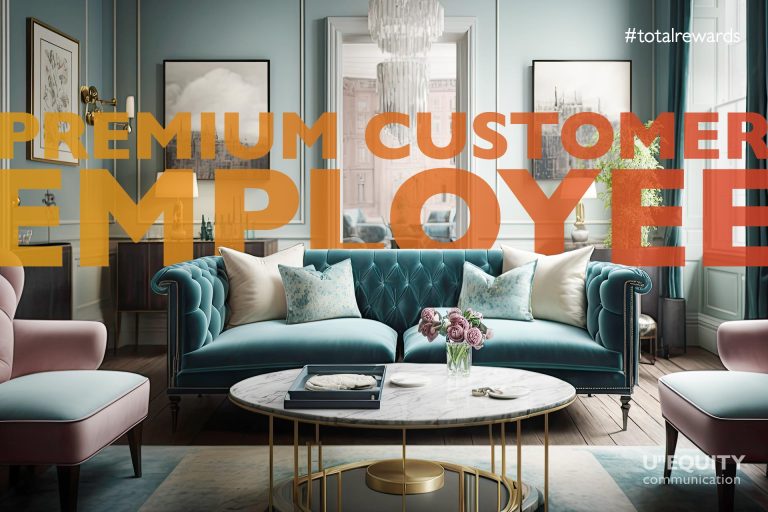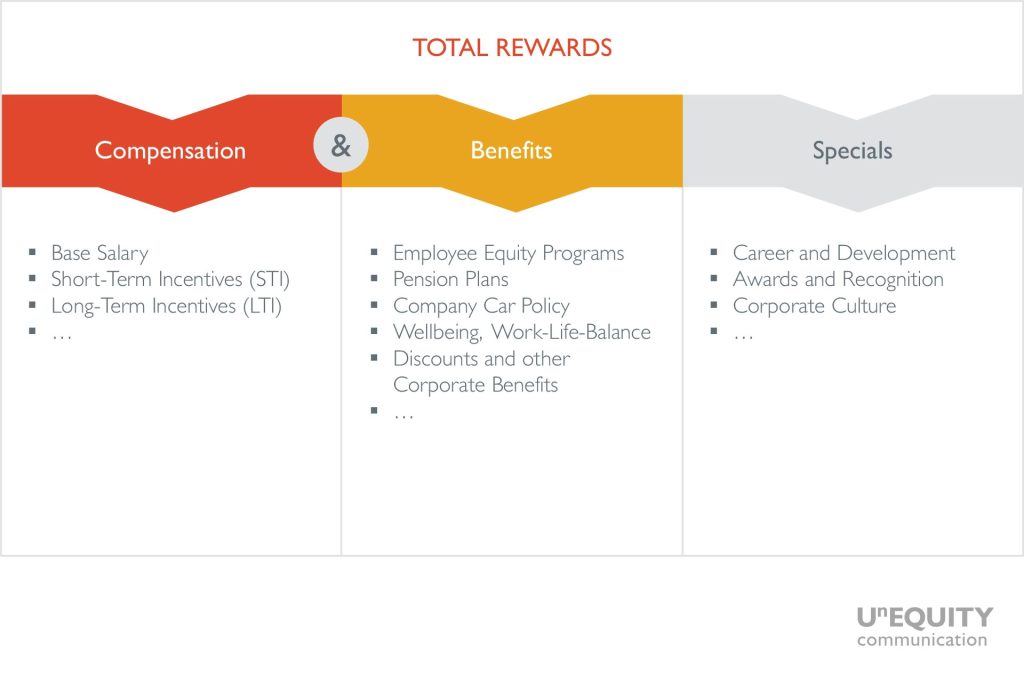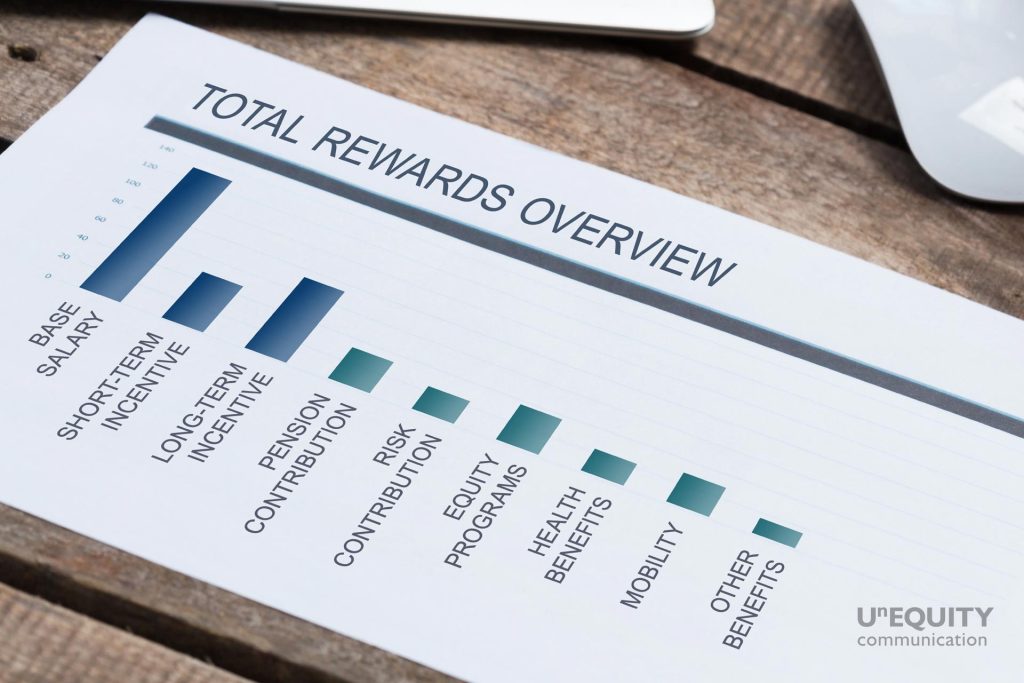
Performance and Reward
When employees are treated like VIP customers, they reward the company’s first-class service with first-class performance.
That’s the concept of performance and reward.
Total rewards systems are company policies for the holistic design of employee compensation. These systems often include working conditions, such as work location and hours, and even advancement opportunities. As each company defines total rewards differently, there is not one clear definition. Instead, companies follow a systematic approach that varies depending on the company and its HR strategy. In any case, a total rewards system is a strategic tool for managing workforce behavior.
Externally, the total rewards strategy is communicated primarily in recruiting and employer branding. It is part of the Employee Value Proposition, which has gained importance, especially in recent years. Before choosing an employer, people want to know what the company is doing for their employees in terms of compensation and benefits, and how flexible they can be in their work performance.
When it comes to internal communication, i.e., to the existing workforce, all too often, companies do not communicate their total rewards strategy holistically. Internal corporate communications provide information about individual elements, such as an employee stock ownership program or a company pension offer. However, managers often find it challenging to communicate reasons for salary changes or bonus payment adjustments. And they are rarely trained communicators who can convey these adjustments in the context of an overall strategy.
A flexible and regularly communicated total rewards system can drive a value-driven corporate culture that employees identify with – over the long term and across different life stages.
In the best case, adapted to the company and its goals
Total rewards systems can be customized to meet the needs and goals of the organization. For example, they can be focused on specific key performance indicators (KPIs) such as revenue, profit, or customer satisfaction. Increasingly important are aspects such as Environment, Social, and Governance (ESG) and issues around Diversity, Equality, and Inclusion (DEI). When the individual components are designed to be flexible, they can be adapted to react to changes in the company or the industry. Most important, however, is that the needs of employees are known and taken into account when designing the systems.
People make the company culture.
Compensation elements, such as incentives in the form of company shares (stock, stock options, or cash) or regular bonus payments can motivate employees to perform to the best of their ability, to stay with the company long-term, and to pursue ongoing career development. Benefits range from traditional free coffee or tea – still very important – to appropriate travel schemes and voluntary financial benefits. Employers can stand out from the competition by combining additional individual benefits and policies with the company’s values.
Total rewards is an essential component of the Employee Value Proposition (EVP) and, therefore, of Employer Branding. When designed with authenticity, the EVP can help companies win the race for qualified talent. It offers employees additional incentives and benefits that go beyond salary and have a positive impact on the working environment. In addition, companies can increase employee motivation and satisfaction and employees’ well-being and work-life balance.
The selection and design of compensation and benefits elements should be aligned with the needs and desires of the people in the company. Regular reviews and adjustments help ensure they remain relevant and attractive.
The important thing here is to think of total rewards as a matrix that takes into account changing needs. The perception of what belongs to total rewards is part of the company culture. That’s why regular communication within the organization is important—to provide a uniform understanding of total rewards as a strategic instrument so that it is valid for everyone in the company.

Unequity's core competency areas within Total Rewards.
Unequity’s core competency is in strategy and design of communications for total rewards.
Total rewards is a system in which people can navigate according to their needs – including any changes..
In line with our positioning as a people-to-people agency, we help our clients from HR departments provide their customers with premium service.

We bring order to total rewards systems by grouping individual services into strategic categories, defining them briefly and concisely, and making them easy to find for the respective target group. We create structure and content for intranets and information portals, write copy and design graphics, and manage various national and international total rewards projects.
We see ourselves as navigators and relationship managers, and we use our communications expertise to support managers and HR departments in their professional customer relationship management, to win new “customers” and retain existing ones.
Unequity has provided strategic communications support for a number of projects in this area in recent years. You can find some examples here. We are always open to new contacts and tasks.
- This article was published on
Share this page directly: